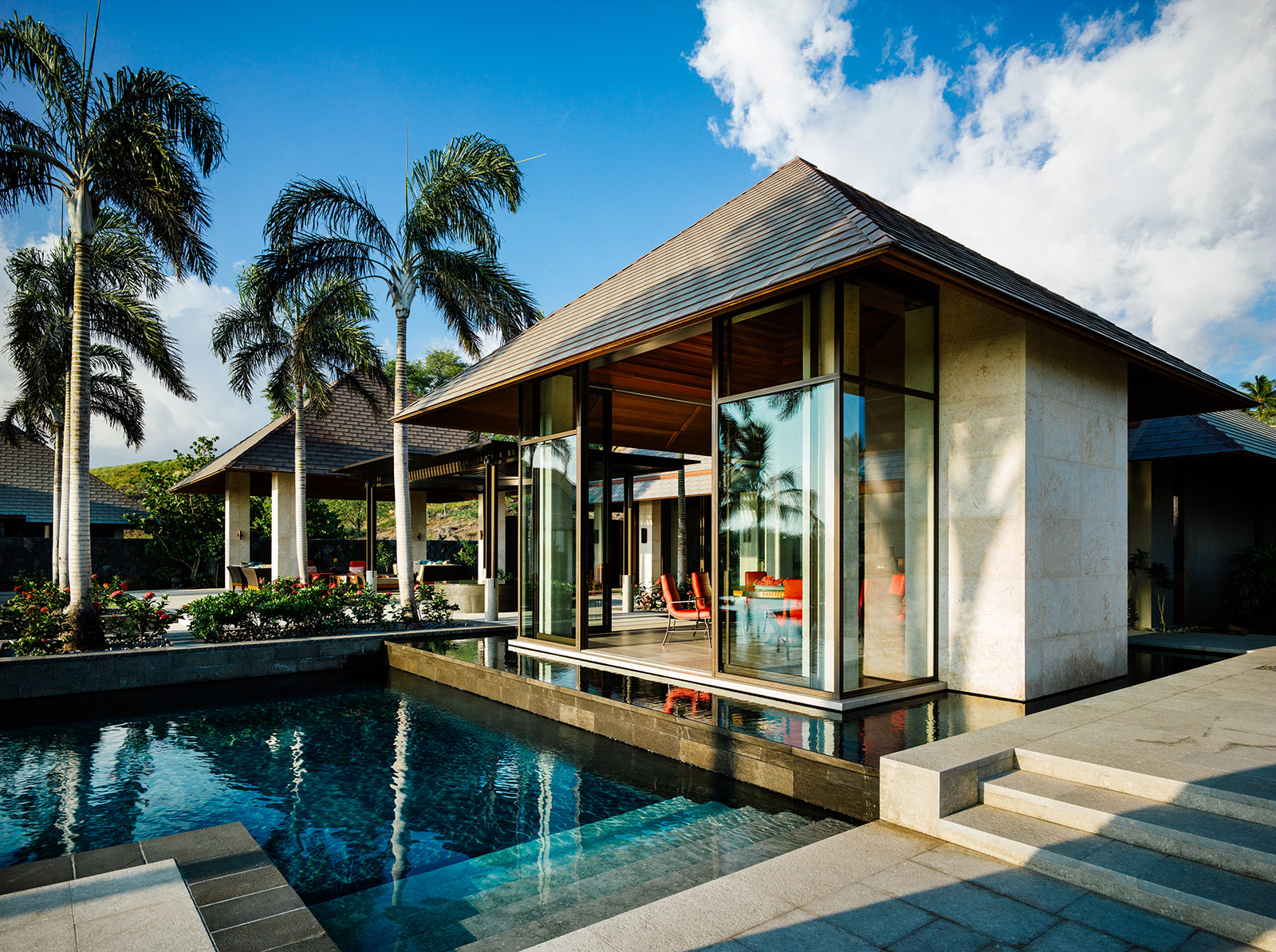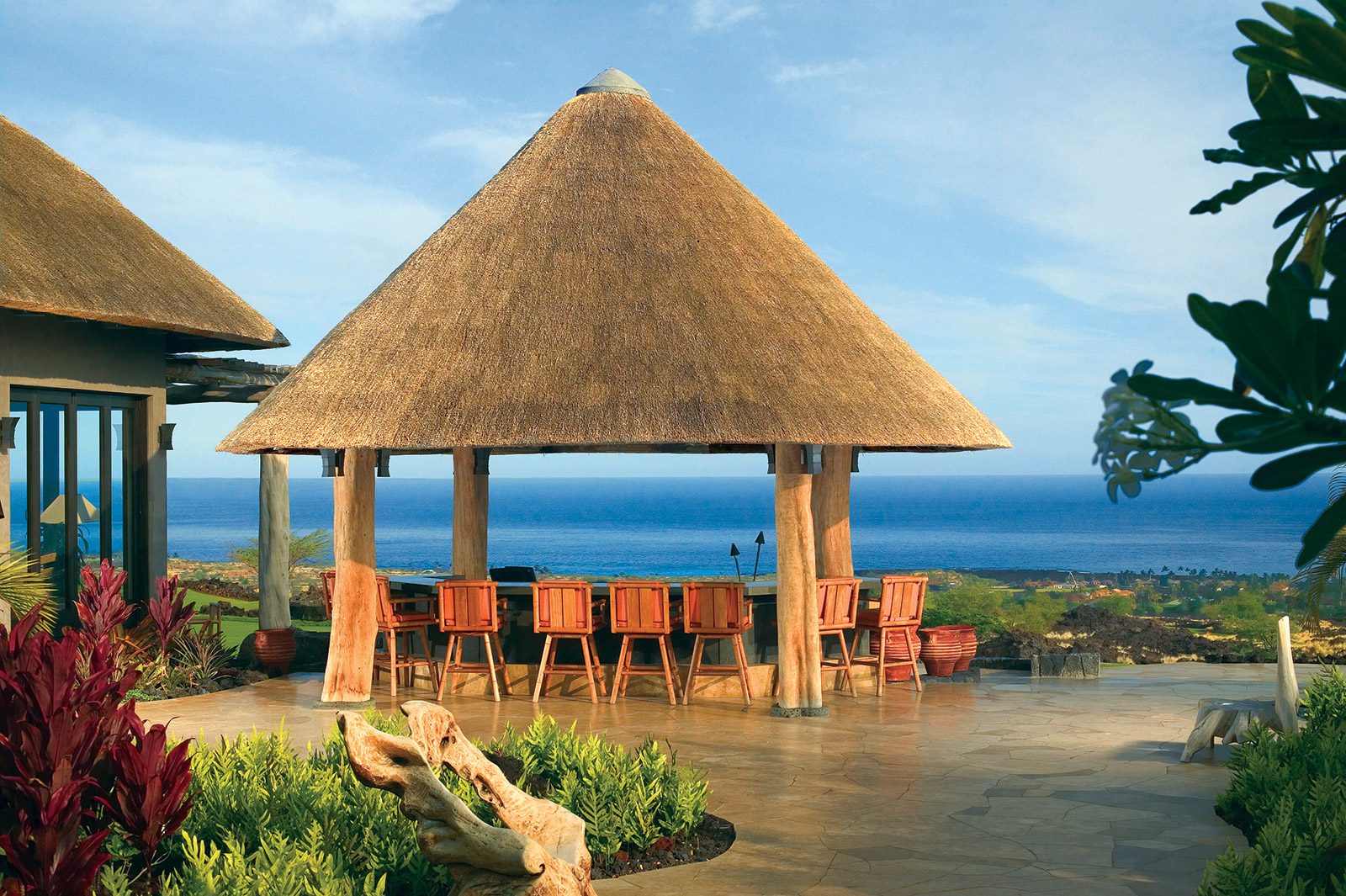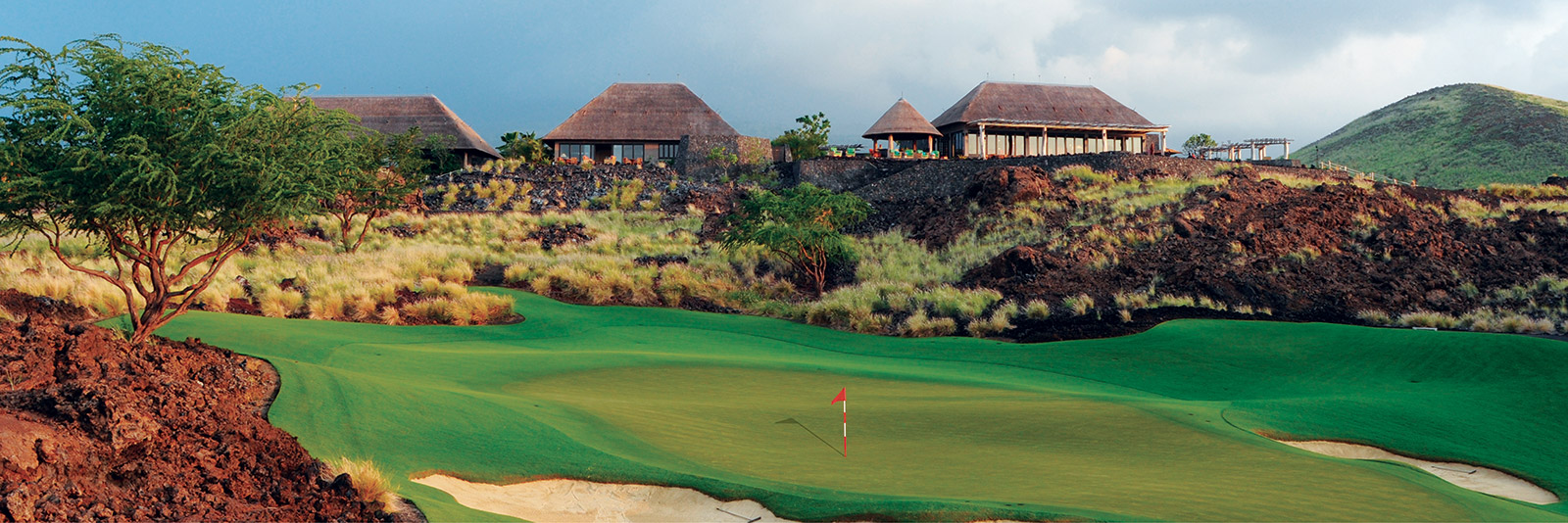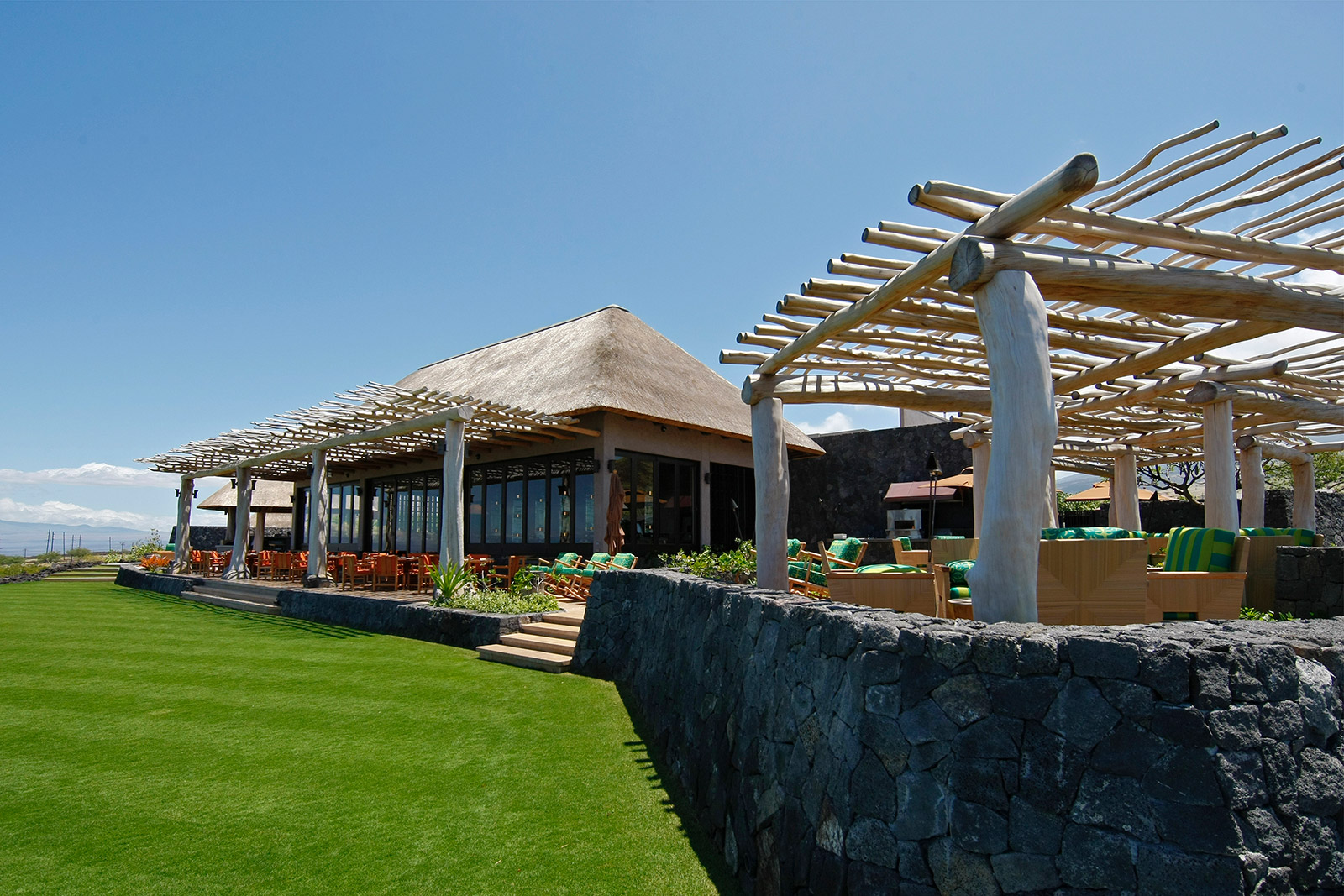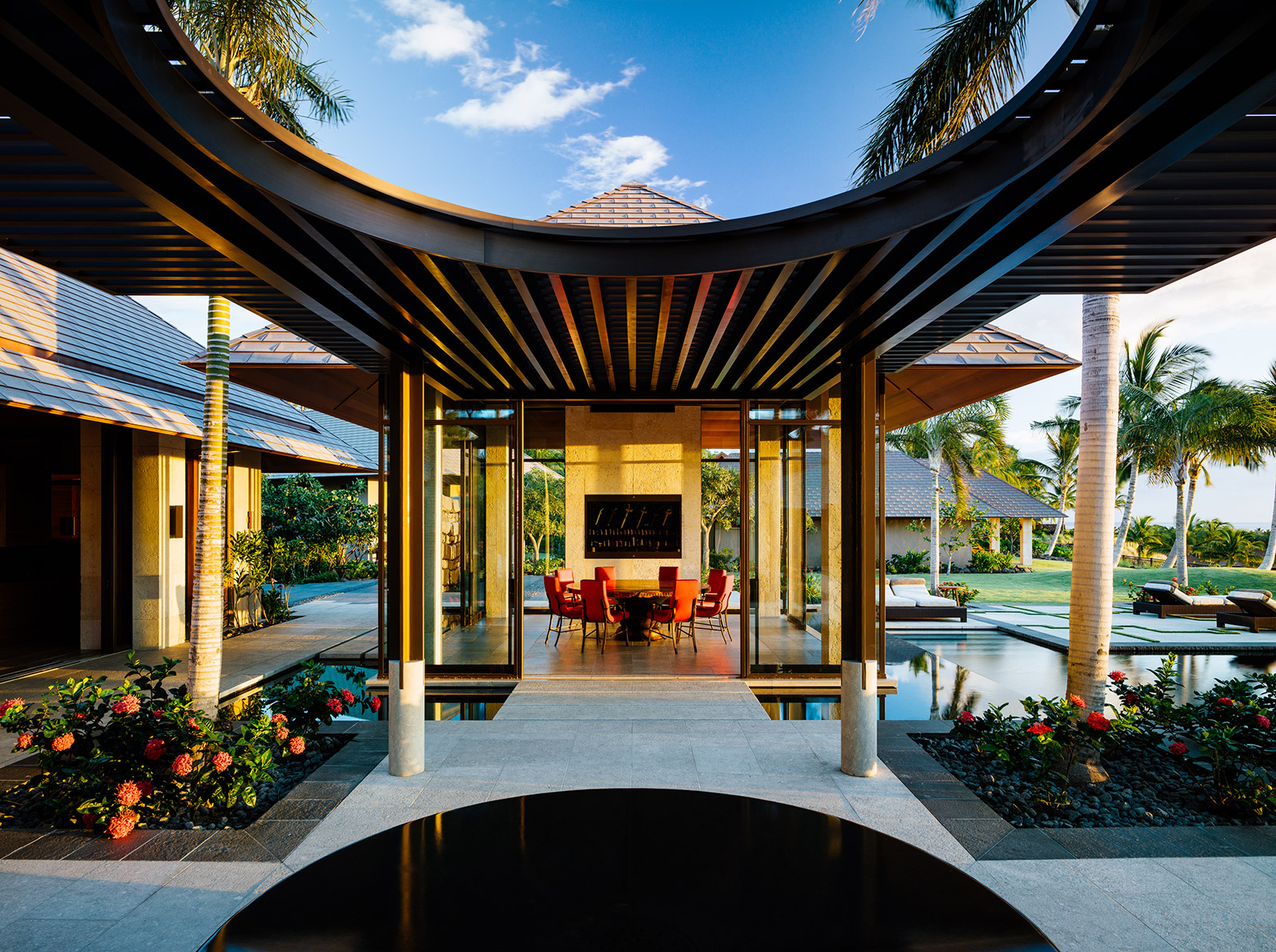Nearly a decade ago, BUILD traveled to the Big Island of Hawai’i to visit with Mark de Reus of de Reus Architects. We discussed the design strategies of tropical modernism, the challenges of thatched roofs, and why new construction in Hawai’i should be blessed by a Hawai’ian priest. Read part 2 here.
The materials you work with as an architect in Hawai’i include lava rock, ōhiʻa lehua trees, and thatch. How have these materials shaped you as an architect?
I’m from Idaho and originally became familiar with the indigenous materials of the Northwest. Then in the 1990s I lived in Indonesia for five years, and the experience seduced me into design for tropical regions. During this time, some of the design work that was going on in Bali and Thailand, such as the Aman resorts, was on the cutting edge of tropical design. This new design work was more contextual, and its use of natural materials was in tune with the allure of beautiful tropical settings. So when I moved to Hawai’i in 2000, I brought with me a range of tropical design sensibilities much wider than what was being offered here at the time. Back then, it seemed there were only two or three different versions of what people considered to be Hawai’ian design, and they had been drastically overused. We began designing with natural materials that supported a concept of island architecture that embraced a wider Polynesian region rather than just Hawai’i specifically.
The use of traditional thatched roofs in your projects is striking. Tell us a bit about the craft of thatched roofs and the process of designing them.
The palm frond, indigenous to Hawai’i, does not actually make for long lasting thatched roofs. The best thatch comes out of South Africa. The South African reed has a life span of about 30 years in an arid climate like that on the leeward side of the Big Island. These South African–style thatched roofs are designed seven-inches thick, and they make for beautiful natural roofs. Figuring out the aesthetics of designing thatched roofs was straightforward, but the engineering and permitting process was a challenge. The structural roof components consist of pole rafters (smaller round purlins that the seven inches of thatch is tied to) and make for a fairly simple assembly. However, the structural calculations don’t fit neatly into what the building departments are used to, and it takes a savvy structural engineer to help nurture the process along. And even though the thatch is treated with fire retardant, the fire departments require sprinklering. The roof forms you’ve seen in our work are derived from what the thatch requires. The roof needs to maintain a minimum slope of 10 units horizontal to 12 units vertical; this steepness automatically gives a strong presence to the roof. It’s good to keep the roofs as simple structures without valleys—this creates a certain pavilion-like character.
Modernism is typically associated with thin horizontal roof planes intended to lightly float or even disappear. The heavy massing of the thatched roofs in projects, like your Kūki‘o Golf Club, beautifully challenges this convention while still adhering to a modern aesthetic. What are the intentional design decisions that you apply with a modern thatched roof?
When you look at a building, one of the first things you identify with is the roof. The roof tends to give instant character to the building. These pavilions are really just simple shelters, so how you handle a select few components — like the roof massing, eave, and wall — is important. You don’t have to overwork the elements; the forms can be kept simple, and with contemporary detailing the overall affect can be powerful in its simplicity. The edges and eaves of a roof are key to achieving pleasing architectural proportions. In Bali, thatched roofs will often flare out at the bottom and create beautiful overall forms. This edge detail is integral to the craftsmanship of constructing the thatch. A crisp edge that is almost horizontal has a very different feel than upturning the thatch, which causes the roof to lose its elegance.
What other indigenous techniques do you like to incorporate into modern design?
Here in Hawai’i, there is a strong tradition of using lava stone for site and building walls. There are only two different kinds of lava, a’a and pahoehoe, but they produce many different styles of stone walls. The a’a lava tends to be rough and jagged, occurring in thick flows, whereas the thinner flows of pahoehoe tend to be billowy and smooth. It’s fun to explore the nuances of how to work with this type of natural, rugged material.
Your work often includes a harmonious balance between the sleek, modern, and naturally rustic. The machined-glass walls that highlight the rustic stick trellises at the Kūki‘o Golf Club are an excellent example. Where do these contrasts have the most significance in your designs?
It’s about developing a sense of place. Carefully handling the composition is one of the ways to instill a soul into the building, rather than it just becoming an assembly of parts. The contrast builds drama and develops an experiential quality that has tangible benefits to the design.
How do you uphold the quality of timelessness in your work?
A good example on the topic of timelessness is in the hospitality sector. Usually hospitality developers are prone to be formulaic in their approach to design, and they like to work with trends. Most hospitality work designs by analogy, just continually tweaking the model rather than designing to what I refer to as first principles, which include the program, what the clients need, and what we want to do regarding an architectural direction. I’m sure they feel it’s a safe way to design and minimizes risk. We prefer to go back to these first principles of design and ask what it is that the user ultimately wants or needs. We design from here rather than simply tweaking a conventional model.
There is a noticeable consistency in your work involving a heavy stone base, a transparent middle, and a substantial thatched roof massing. Is there a danger that this method could become prescribed to the point of excluding the exploration of design?
I think if you look across the board at our work, you will find a variety of design responses. In terms of an influence that could limit the exploration of design, I find that limitations imposed by community design guidelines or preconceived notions by developers have more potential to limit creativity.
There is a Hawai’ian term on your website, ka nohonalokahi, which translates to “the way of living in connection and harmony, with the laws of spirit, nature, and man.” Tell us a bit about this concept.
A friend of mine on Hawai’i is a Kahu, a Hawai’ian priest, and he does a lot of the blessings for our projects while they’re under construction and also once they’re finished. I asked him for a Hawai’ian phrase that reflected our approach to design. We discussed it several times and as the subtleties of language are sometimes difficult to translate, it took a while for him to come up with this phrase. As an aside, and in a somewhat similar context, an ancient Hawai’ian term, ahupua’a, means “ocean to mountain.” Native Hawai’ians organized their land in strips that run from the ocean to the mountains, and it was their traditional way of practicing sustainability. This organization takes into account everything you need for life, from the fish that are caught on the shore, to the agriculture and livestock further up the hill.
What kinds of projects in Hawai’i receive a blessing by a Kahu?
Since most of our clients have moved here from somewhere else, or maybe the project is a second home for them, this ceremony encourages them to be stewards of the land and take a vested interest in the community. In the same ceremony, the Kahu also asks the ancestors who may have ties to the land for their blessing, and to accept this new family or owner. You hear stories from these Kahus about how sometimes they feel the spirits of ancestors still lingering around. The Kahu’s role is to ask them to move on. Blessing rituals like this are also common in the folk belief systems of Indonesia.
The term “lifestyle expectations” is mentioned on your website in conjunction with the resort residence buyer. What does this mean in the context of a tropical paradise?
It runs the gamut of what you might call the luxuries of living. A home is more than a collection of spaces or an assembly of materials; it’s a vessel for living and experiencing family and a location. This term helps orient the client to expanding their input to us for design into the qualitative realm.
 Mark de Reus is the founding design partner of de Reus Architects, an award-winning architecture firm based in Hawai’i. He has been widely recognized for his designs of resorts and residences. His portfolio also includes clubhouses, spas, restaurants, and mixed-use projects. He has been recognized as one of the world’s top 100 architects and designers by Architectural Digest. His first book, Tropical Experience Architecture + Design, gives readers an in-depth look at a number of Mark’s most celebrated designs.
Mark de Reus is the founding design partner of de Reus Architects, an award-winning architecture firm based in Hawai’i. He has been widely recognized for his designs of resorts and residences. His portfolio also includes clubhouses, spas, restaurants, and mixed-use projects. He has been recognized as one of the world’s top 100 architects and designers by Architectural Digest. His first book, Tropical Experience Architecture + Design, gives readers an in-depth look at a number of Mark’s most celebrated designs.






